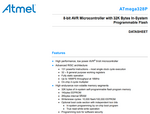imranahmed
Advanced Member level 3

- Joined
- Dec 4, 2011
- Messages
- 817
- Helped
- 3
- Reputation
- 6
- Reaction score
- 3
- Trophy points
- 1,298
- Location
- Karachi,Pakistan
- Activity points
- 6,493
Please let me know I want to implement life timer in Arduino it will start with Arduino power-up and when Arduino power-off it stores time and when again we power-up Arduino it will display last hours or minutes Arduino ON and add new power-up time and so on.
Any hint or article?
Any hint or article?





